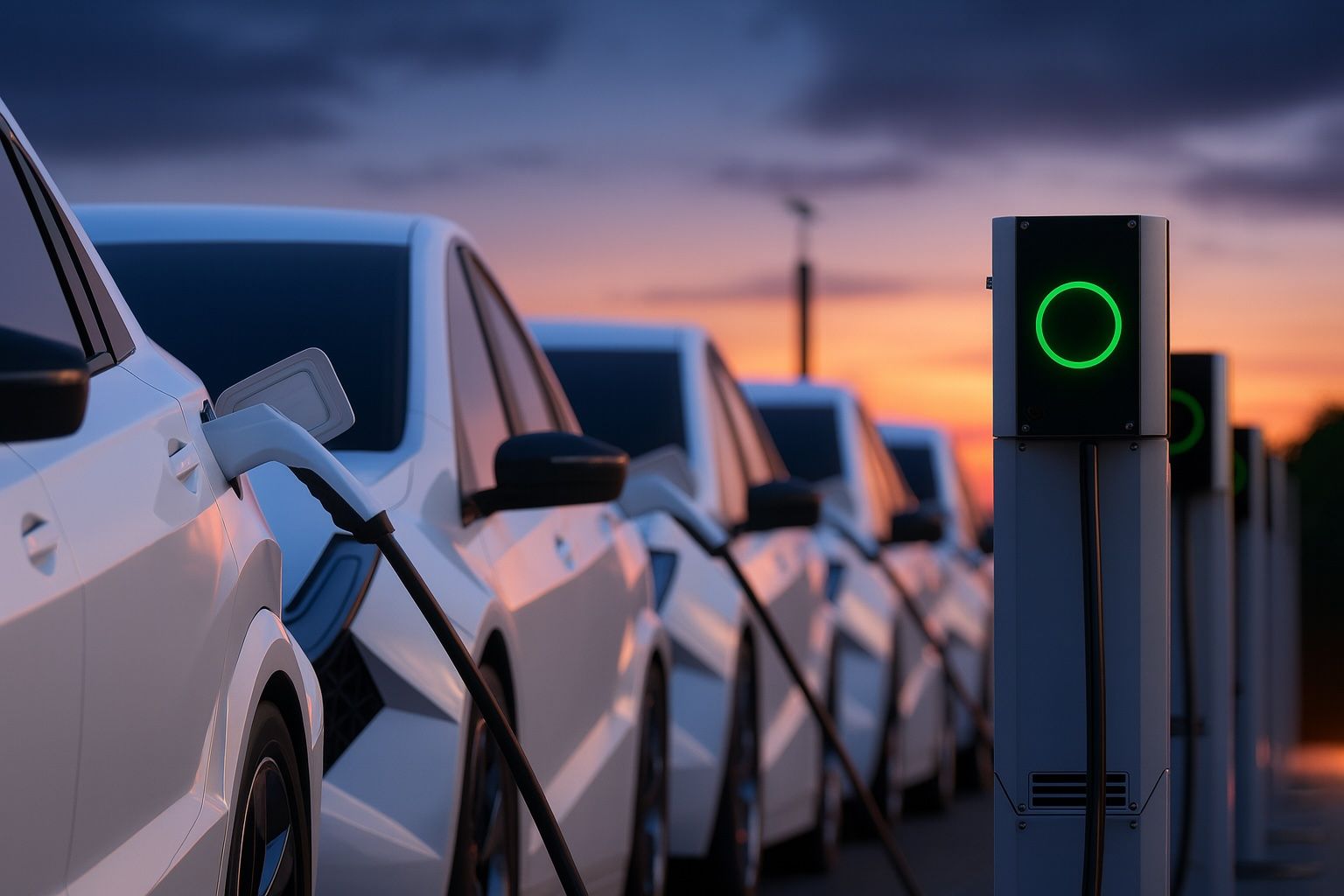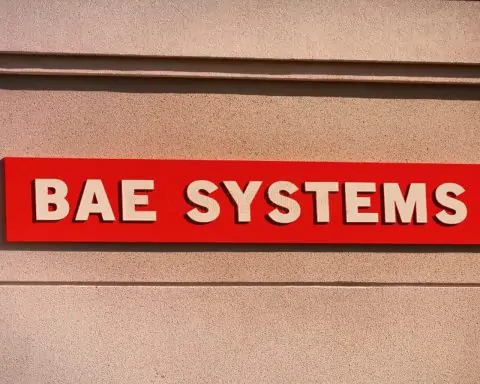- No driveway? No problem: New UK government plans will remove the need for planning permission to install cross-pavement EV charging gullies, making it much easier for renters and street-parkers to charge electric cars at home [1] [2].
- Cheaper charging at home: By plugging in at domestic electricity rates (as low as 6.5p/kWh) instead of pricier public chargers (~52p/kWh), families could run an EV for as little as 2p per mile – about £2.50 from London to Birmingham [3] [4].
- Cutting costs and red tape: Drivers without off-street parking will save up to £250 in application fees under the proposal [5]. Currently, getting permission to run a charging cable across a pavement can cost £350–£700 in bureaucratic fees [6] – an obstacle the government is now slashing.
- Thousands to benefit: Around 40% of UK households (roughly 9 million) have no private driveway [7]. Many have resorted to trailing cables over pavements (a safety no-no) to access cheaper home power [8]. The new rules will enable these drivers to install discreet ground cable channels, opening up affordable home charging to “thousands more households,” according to Transport Secretary Heidi Alexander [9].
- Broader EV push: The plan also mandates EV chargepoints in new covered car parks (fixing a loophole in building regs) and will strengthen rules so landlords can’t overcharge tenants for electricity [10] [11]. It’s part of a wider government drive to boost charging infrastructure and give drivers confidence to go electric as EV sales surge in the UK [12] [13].
Red Tape Axed for Kerbside Charging
In a bid to accelerate the electric vehicle revolution, the UK government announced it is overhauling planning laws to help drivers without off-street parking charge at home. Ministers plan to scrap the requirement for planning permission before fitting a “cross-pavement charging gully” outside one’s home [14]. These narrow covered channels let a charging cable run safely under the sidewalk from a home power outlet to a car at the curb, without creating a trip hazard [15] [16].
Currently, homeowners with driveways can install a charger on their property freely, but those who park on the street must navigate costly red tape. Securing approval for a pavement cable gully often costs £350–£700 and involves drawn-out local council paperwork [17]. Some councils even have to issue planning permission to themselves on residents’ behalf – a bureaucratic loop the reform will eliminate [18]. Under the new proposal (set to be consulted on shortly), pavement charging systems would become “permitted development” nationwide [19]. In practice, that means installing a flush-fitting cable gully would no longer need special permission – similar to how adding a small porch or garden office doesn’t, thanks to relaxed planning rules [20].
Officials say this change will make charging much fairer for renters and people with no driveways, who have so far been left behind in the EV transition [21] [22]. “Wherever you park your car, we’re making it fairer, easier and cheaper to make the switch to electric,” affirmed Transport Secretary Heidi Alexander in a statement [23]. The government will launch a public consultation to hash out details, but the intent is clear: cut the red tape and speed up kerbside charger rollouts “to bolster the EV revolution” [24].
This initiative builds on a pilot scheme from earlier this year: a £25 million grant fund announced in July to help local authorities cover the cost of installing these cable gullies on request [25] [26]. At least 40 councils in England have already been trialing pavement channels, often working with innovators like Kerbo Charge, Pavecross or Gul-e to ensure the cables sit flush with the pavement and pose minimal maintenance issues [27] [28]. However, many other councils were hesitant due to safety fears or uncertainty over regulations [29]. By writing clear rules at the national level (and removing the planning hurdle), ministers hope to standardize the approach across the country and reassure councils that discreet cable gullies are a safe solution for on-street charging [30].
Cheaper Home Power – Ending the “Pavement Cable” Dilemma
The core reason behind this move is simple: cost. Charging an EV at home is vastly cheaper than using public chargers, primarily because of energy pricing. Home electricity tariffs can be as low as 6.5 pence per kWh on EV-friendly plans [31], whereas plugging into a public on-street charger costs around 52p/kWh on average [32] – eight times more! This huge gap means a typical electric car could drive for about 100 miles on £2–£3 of home power, but the same charge might cost over £15 at a public charger. In fact, the government notes that with access to off-peak domestic rates, an EV could run for as little as 2 pence per mile [33]. That’s roughly £2.50 to go from London to Birmingham – a fraction of the cost of petrol for the same journey [34].
However, about 40% of UK households lack off-street parking such as a driveway or garage [35]. That equates to millions of drivers who can’t easily install a home wallbox charger connected to cheap household electricity. Many of these residents live in urban and suburban areas – often parking on the street in front of their home. Without a designated charger, they’ve been stuck paying higher public charging fees or relying on “granny cables” dangled across sidewalks from kitchen windows, which pose obvious hazards [36].
It’s not just a financial issue but also an equity issue. The current setup penalizes those without private parking – often apartment-dwellers or residents of older terraced housing – by forcing them to pay more to charge their cars. “A lack of at-home charging is seen as a major obstacle to driving an EV” for this segment, notes EV Powered magazine, since roughly 4 in 10 households simply can’t easily plug in at home today [37]. The costly, inconvenient nature of public charging has even been “a clear barrier to adoption of EVs” in cities, as one charging firm executive pointed out [38]. With public chargers also incurring a higher VAT (20%) on electricity versus just 5% VAT for home electricity [39], it’s no surprise many drivers have been “crying out” for a way to use cheaper home energy [40].
The new cross-pavement gully policy directly targets this divide. By allowing a safe, permanent cable conduit embedded in the pavement, it lets street-parking EV owners tap into their home supply without creating an obstacle for pedestrians. No more running loose cables that neighbors trip over or that violate local rules – instead, a slim covered channel carries the cord underfoot. Councils like Oxfordshire’s have been early adopters; “A third of Oxfordshire households don’t have off-street parking, so we believe [cable gullies] could give residents the confidence to switch to an EV,” said one local official during trials [41] [42]. Now, what started as localized pilots is set to become a nationwide norm. If the planning permission requirement is scrapped as proposed, drivers will also save the ~£250 planning application fee on top of the energy savings [43] – removing a financial barrier that many found frustrating and unnecessary.
Crucially, this measure is about fairness. “It’s a massive step towards equal opportunity for renters to charge at home,” says Matt Adams, head of transport at the Renewable Energy Association, “making an EV more viable for millions of renters up and down the country.” [44] By leveling the playing field for those without driveways, the government hopes to convince more hesitant consumers that they won’t be left behind in the electric transition. As Transport Secretary Alexander put it, these reforms will “open up affordable home charging to thousands more households” and ensure “everyone – whether or not they have a driveway – can access the benefits of going electric.” [45] [46]
New Car Park Charger Mandates and Tenant Protections
The announced package goes beyond just pavement cables. The government also plans to mandate EV charge points in new covered car parks, such as underground parking garages in apartment blocks or multi-storey public car parks [47] [48]. Up to now, some property developers have exploited a loophole in building regulations – if parking was under cover (say, beneath an apartment building), they weren’t always required to install electric charging facilities, unlike open-air car parks [49]. That loophole will be closed, ensuring that new residential and commercial developments with covered parking include charging infrastructure by default [50]. This change particularly benefits renters and leaseholders in flats: if your building has a garage or covered lot, you should soon have EV charging available on-site. “Renters with new-build covered car parks will now, rightfully, be able to access a chargepoint,” noted the REA’s Matt Adams, applauding the move [51].
Another element of the plan focuses on protecting consumers from unfair pricing. The government says it will work with energy regulator Ofgem to stop any price-gouging by landlords or site owners who control residents’ charging points [52] [53]. There have been worries that some landlords might slap high surcharges on tenants who plug in their EV, undermining the savings of home charging. Ministers are pledging to “strengthen protections against landowners overcharging tenants for home charging above the market rate” [54]. In other words, if you rent a flat and charge your car in your building’s garage, your landlord shouldn’t be able to charge you exorbitant electricity prices. Ofgem’s involvement suggests potential regulation of maximum resale prices for electricity in such scenarios [55].
The government is also leaning on Ofgem to ensure that the broader charging network is reliable and fairly priced [56]. As more drivers switch to EVs, there’s a parallel effort to expand public charging infrastructure – including a recent £381 million investment to help deploy over 100,000 public chargers across England [57]. The new initiative complements that by tackling home-based charging equity. Together, these steps aim to tackle “charging anxiety” – the worry that one won’t find a convenient or affordable place to plug in [58]. With about 86,000 charge points already available across the UK and climbing [59], the focus is now on filling the gaps in coverage and cost. The result should be a more resilient, accessible charging network – from private driveways and apartments to streets, car parks, and highways.
EV Adoption Surges – and Experts Weigh In
The timing of these reforms is no accident. Electric car sales are booming in the UK, which was recently crowned Europe’s #1 EV market [60]. In fact, Britain’s EV sales jumped nearly one-third in the past year [61]. New models are flooding in, including from overseas upstarts – Chinese automaker BYD saw UK sales explode almost ten-fold, selling over 11,000 cars in Britain in September 2025 alone [62]. As more drivers go electric, the pressure is on to ensure charging keeps pace with demand. Drivers without personal driveways represent a huge chunk of potential EV owners; solving their charging dilemma could unlock a new wave of EV adoption, which is crucial for meeting climate goals and the planned 2035 phase-out of petrol/diesel cars.
Industry experts and EV advocates have overwhelmingly praised the government’s latest move – albeit with calls for continued action on other fronts. Vicky Edmonds, CEO of EVA England (an electric vehicle owners’ association), called it “a hugely welcome move from Government on one of the biggest issues facing drivers today.” Her group’s recent survey found access to affordable home charging is a top priority for both current and would-be EV drivers [63]. “Cutting red tape so renters and those without driveways can charge at home is exactly the kind of common-sense reform drivers have been crying out for,” Edmonds said, hailing it as “a big step towards fairer, cheaper and more accessible charging for everyone.” [64]
Charging infrastructure providers also voiced support. Vicky Read, chief executive of industry alliance ChargeUK, agreed that “any measure which makes it easier for drivers to make the switch to electric is positive.” But she added a note of caution that truly leveling the playing field will require more than just this rule change. To make the EV transition “truly fair we need easily available and affordable charging at home, at work and in public, [with] public and private networks working together,” Read said [65]. She urged the government to continue removing barriers to charger deployment and to tackle cost inequalities – for instance, the higher VAT on public charging and steep standing charges that make public EV fueling pricier per mile [66]. In short, the red tape cuts are welcome, but the charging industry wants further reforms to ensure drivers can find reasonably priced charging anytime, anywhere they need it.
Another positive reaction came from renewable energy experts, who see this as aligning with the UK’s broader clean energy shift. By enabling more overnight home charging, the policy can help balance the grid (EVs charging off-peak can soak up excess renewable electricity at night) and reduce strain on daytime public chargers. It also complements other recent moves like allowing signage on motorways for EV charging sites and funding thousands of chargers for NHS facilities [67] [68]. All told, these efforts contribute to what Heidi Alexander calls the “Plan for Change” – a concerted push to decarbonize transport while supporting British EV industry jobs [69] [70].
Bigger Picture: Smoother Charging for an EV Future
The decision to legitimize cross-pavement charging may seem like a small regulatory tweak, but it addresses a key practical hurdle in the day-to-day life of EV owners. As auto analyst Charlie Martin noted, this change could make home charging “cheaper and more accessible for people without driveways,” finally bridging a gap in the EV market [71] [72]. It signals that policymakers are listening to on-the-ground issues like trailing cables and expensive planning hoops – and are willing to act to keep the electric transition on track.
There’s still work ahead: the consultation will determine how the rules are implemented, and ensuring new pavement channels don’t create new problems (for example, how to handle multiple EV owners on the same street all wanting curbside chargers) will require careful guidance. The government has already issued best-practice guidelines for councils on safe cross-pavement solutions [73], and London boroughs have been sharing their own playbooks for managing street parking and charger access [74]. Scaling up from dozens of pilot installations to potentially tens of thousands will be a learning process. Yet, with modern gully designs that are unobtrusive and weather-resistant, providers say maintenance should be minimal [75]. And since users still need to get permission from the local authority to dig the pavement (even if formal planning consent is waived), councils will have oversight to prevent any cowboy installations. Essentially, it removes one layer of approval (and cost) but not the need for proper installation standards.
Meanwhile, innovation continues to make EV charging easier across the board. Automakers and tech companies are introducing new solutions – for instance, Tesla recently began selling a Universal Wall Connector home charger that comes with adapters to fit any EV, aiming to simplify home charging for multi-car households [76]. Wireless charging pads, curbside charging posts, even streetlamp chargers are being trialed in various cities. All these developments share a goal with the government’s plan: make charging as convenient as refueling, or even more so. When plugging in is easy and ubiquitous, drivers are far more likely to ditch petrol for good.
In summary, the UK’s latest EV charging reforms have been met with enthusiasm as a game-changer for those without driveways. By cutting red tape and bringing down costs, the government is removing a major blocker to EV ownership for millions. Experts say it’s a strong step toward a future where home charging is accessible to all, not a luxury for the few. And combined with investments in public charging and new rules to ensure fairness, it puts Britain on a faster track towards its electric mobility goals. As EV uptake accelerates – with record sales and even newcomers like BYD selling thousands of cars a month in the UK [77] – measures like these ensure the charging infrastructure keeps pace with the electric boom. The road to an all-electric future requires charging solutions on every corner, and thanks to these changes, that vision is a little closer to reality.
Sources:
- UK Department for Transport – “Government looks to slash red tape to make charging electric vehicles at home easier” (Press Release, 29 Oct 2025) [78] [79]
- Transport + Energy – “Plans to cut planning permission on cross-pavement gullies” [80] [81]
- Electrifying.com – “Red tape slashed for pavement EV chargers as ministers back kerbside charging revolution” [82] [83]
- EV Powered – “Government looks to slash red tape and costs around home charger fitting” [84] [85]
- The Guardian – “English councils urged to install pavement gullies for home charging of electric cars” (12 Jul 2025) [86] [87]
- Autocar – “Government could scrap planning permission for EV charging gullies” (29 Oct 2025) [88] [89]
- GB News – “Labour pushes drivers to give up petrol and diesel cars for EVs under new proposals” [90] [91]
- TechStock² (TS2.Tech) – “BYD’s European EV Invasion – Boom in Sales…” [92]; “Tesla’s October Shockwave” [93]
References
1. www.electrifying.com, 2. transportandenergy.com, 3. transportandenergy.com, 4. evpowered.co.uk, 5. transportandenergy.com, 6. www.electrifying.com, 7. evpowered.co.uk, 8. www.theguardian.com, 9. transportandenergy.com, 10. www.electrifying.com, 11. www.electrifying.com, 12. www.gov.uk, 13. ts2.tech, 14. www.electrifying.com, 15. www.autocar.co.uk, 16. www.autocar.co.uk, 17. www.electrifying.com, 18. www.electrifying.com, 19. www.electrifying.com, 20. www.electrifying.com, 21. www.gov.uk, 22. evpowered.co.uk, 23. transportandenergy.com, 24. transportandenergy.com, 25. www.gov.uk, 26. www.theguardian.com, 27. www.electrifying.com, 28. www.theguardian.com, 29. www.theguardian.com, 30. www.electrifying.com, 31. evpowered.co.uk, 32. evpowered.co.uk, 33. transportandenergy.com, 34. transportandenergy.com, 35. evpowered.co.uk, 36. www.theguardian.com, 37. evpowered.co.uk, 38. www.theguardian.com, 39. www.theguardian.com, 40. transportandenergy.com, 41. www.autocar.co.uk, 42. www.autocar.co.uk, 43. transportandenergy.com, 44. transportandenergy.com, 45. transportandenergy.com, 46. www.theguardian.com, 47. www.electrifying.com, 48. www.electrifying.com, 49. www.electrifying.com, 50. www.electrifying.com, 51. transportandenergy.com, 52. transportandenergy.com, 53. www.electrifying.com, 54. transportandenergy.com, 55. www.electrifying.com, 56. transportandenergy.com, 57. www.gov.uk, 58. www.gov.uk, 59. www.gov.uk, 60. www.gov.uk, 61. www.gov.uk, 62. ts2.tech, 63. transportandenergy.com, 64. transportandenergy.com, 65. transportandenergy.com, 66. transportandenergy.com, 67. www.theguardian.com, 68. www.theguardian.com, 69. www.gov.uk, 70. www.gov.uk, 71. www.autocar.co.uk, 72. www.autocar.co.uk, 73. www.evinfrastructurenews.com, 74. www.londoncouncils.gov.uk, 75. www.electrifying.com, 76. ts2.tech, 77. ts2.tech, 78. www.gov.uk, 79. transportandenergy.com, 80. transportandenergy.com, 81. transportandenergy.com, 82. www.electrifying.com, 83. www.electrifying.com, 84. evpowered.co.uk, 85. evpowered.co.uk, 86. www.theguardian.com, 87. www.theguardian.com, 88. www.autocar.co.uk, 89. www.autocar.co.uk, 90. www.gbnews.com, 91. www.gbnews.com, 92. ts2.tech, 93. ts2.tech










